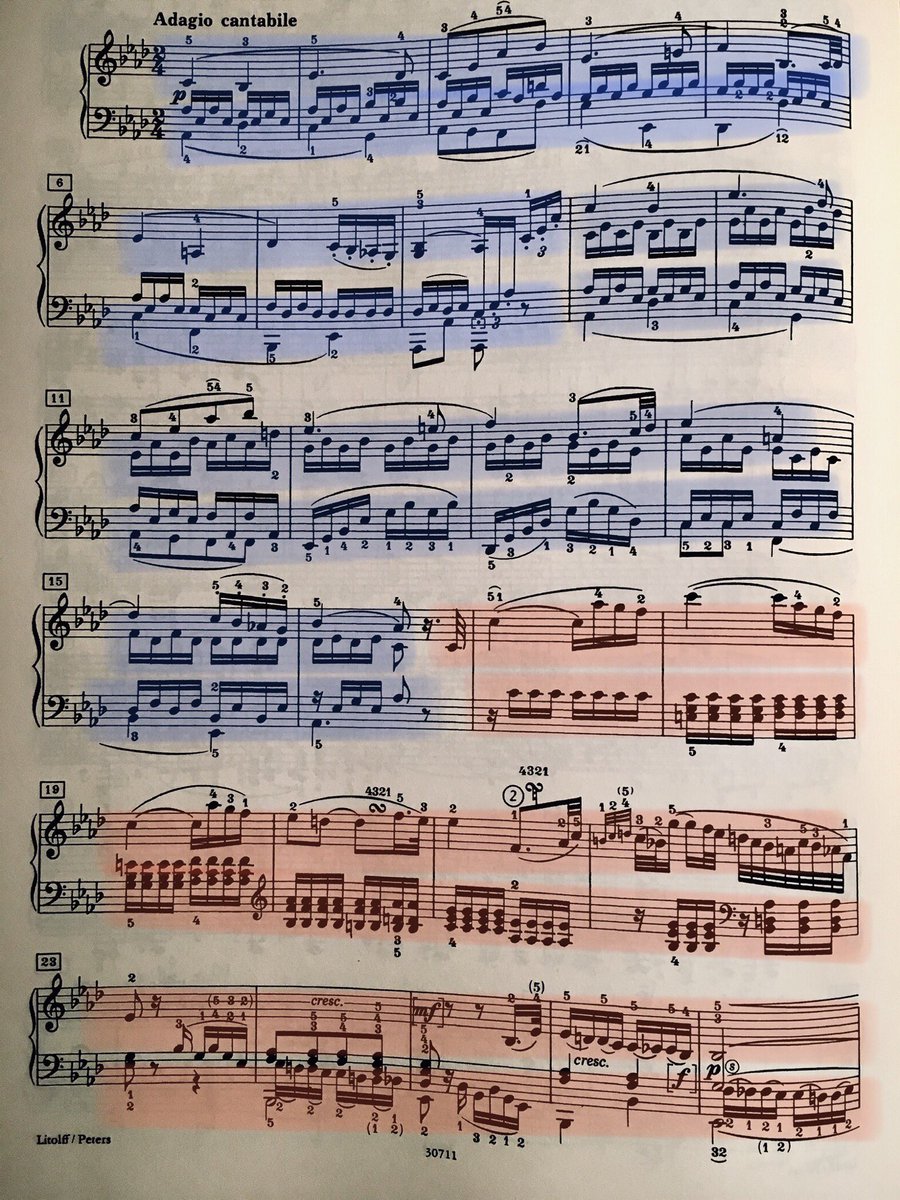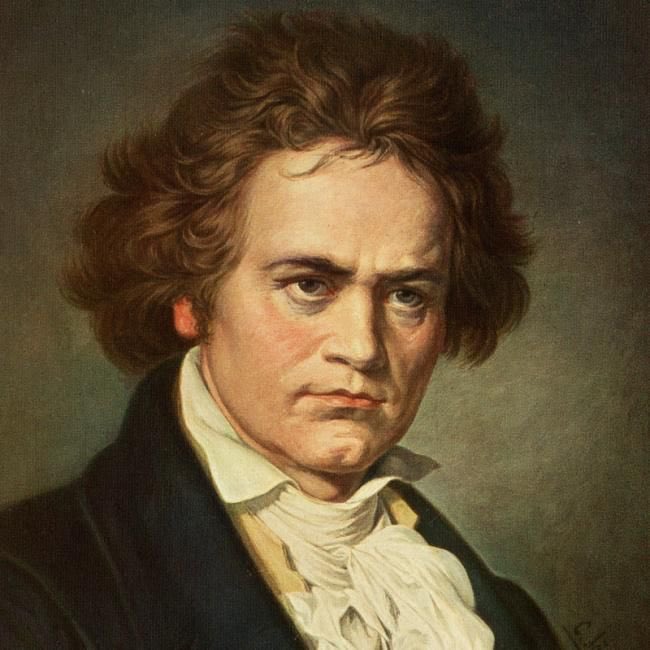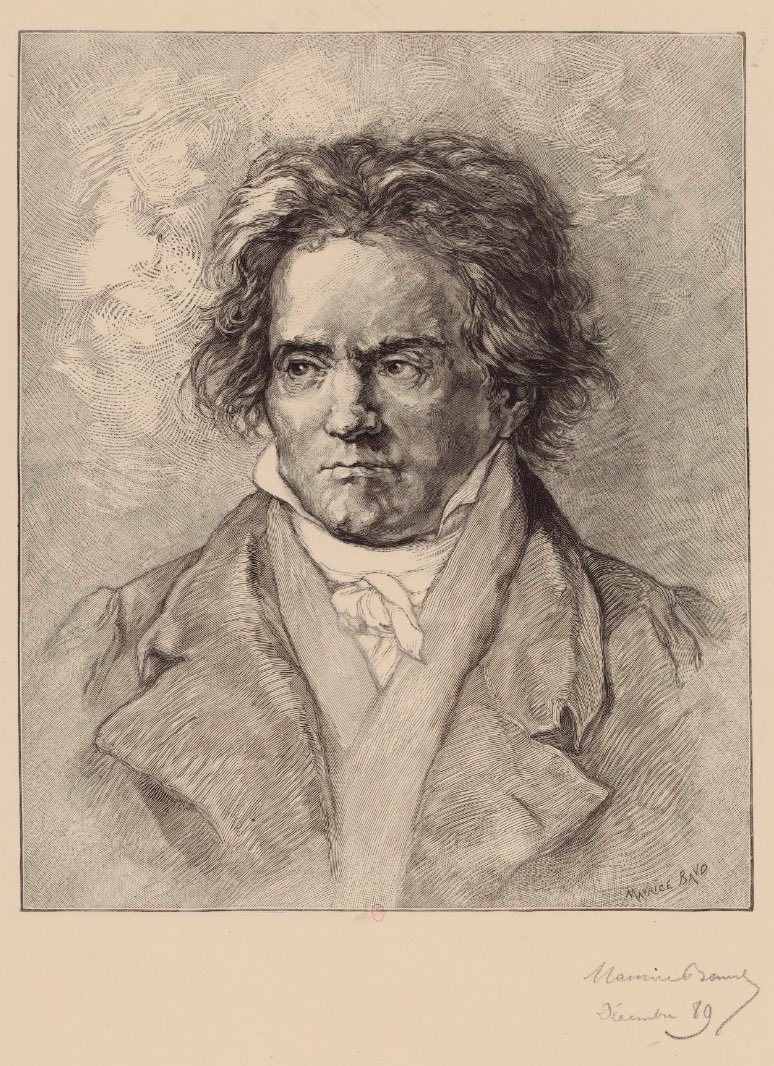On musical structure; fifth instalment: Rondo Forms
To outline the structure of the rondo forms, we will need to resort to discussing its technical trappings. A general portrait of the rondo forms can be painted, however, by defining a few key characteristics.
1/27
To outline the structure of the rondo forms, we will need to resort to discussing its technical trappings. A general portrait of the rondo forms can be painted, however, by defining a few key characteristics.
1/27
The rondo forms capitalise upon one of music‘s most fundamental principles, namely repetition. They are primarily defined by the repetition of the primary idea, its secondary sections acting as digressions from this primary idea.
2/27
2/27
The repetitions of the rondo's main idea, often varied, provide the development of the musical idea. As outlined in Schoenberg‘s words on the form I shared last week, the subordinate sections are merely there to prevent the monotony of hearing repetitions all the time.
3/27
3/27
In the more common variant of the form, the initial material is repeated several times, but the simpler rondo forms are strikingly similar to the scherzo/minuet; which are ABA forms where the parts themselves are often aba forms according to the following scheme:
4/27
4/27

The trio section may feature its own repeats or contain varied repetitions. The individual parts are often balanced in such a way, that each is approximately equal in size compared to the other; the trio is often around the same length as the minuet/scherzo.
5/27
5/27
As can be seen in the schematic representation, the structural elements of a scherzo or minuet can each be so compounded that, on the whole, a rondo form is created, and it is a scherzo or minuet solely on account of its character, title or place in a multi-movement work.
6/27
6/27
A particular feature distinguishing the movements most often designated as “rondo” is in the character of these movements, as well as their place in a musical work, often serving as a finale in a three- or four movement structure.
7/27
7/27
The mood is often brilliant, warm, cheerful or playful, the tempo moderately fast to very rapid.
8/27
8/27
Of course, not all movements in rondo form possess these trappings of mood and tempo and repetitions may be thus cleverly disguised that they are not at all easily recognisable as such—an “andante” movement is rarely marked as a rondo, but may still be in rondo form.
9/27
9/27
To give an example of the flexibility of the rondo form; the final movement of Beethoven‘s Op. 14/2 is marked “scherzo” but it is in rondo form, occupying the place of the concluding movement and possessing a playful (almost Haydenesque) mood.
10/27
10/27
Let us take a brief, concise look at the different types of rondo form. Please keep in mind that each component part can, and often will, in itself consist of a smaller form; either ternary or binary, and each may or may not feature its own internal repetitions.
11/27
11/27
The small forms ABA and ABAB
It is questionable whether we may designate these as rondo forms. In form, they are quite alike to either the small ternary form or the minuet/scherzo forms—distinguished from the latter two mainly by convention.
12/27
It is questionable whether we may designate these as rondo forms. In form, they are quite alike to either the small ternary form or the minuet/scherzo forms—distinguished from the latter two mainly by convention.
12/27
These forms are often used for slow movements, as in the second movements of Beethoven’s Op. 2/1 (ABAB), Op. 28 (ABA) or Op. 7 (ABAB).
13/27
13/27
Note the ternary structure inside of each of the larger parts in the slow movement of Op. 28 (marked blue and red and green and lilac) a variation of the blue section appears in the repeat of the A section and is repeated before the coda (yellow).
14/27



14/27




Recording:
The coda quotes first from the A section (turquoise), then from the B section (light green):
15/27
15/27
The small rondo forms ABABA and ABACA
The first of these is almost analogous to the minuet/scherzo with the conventional repeats observed (A-A-B-A-B-A).
16/27
The first of these is almost analogous to the minuet/scherzo with the conventional repeats observed (A-A-B-A-B-A).
16/27
They appear not frequently as independent forms, more often as subsections within a larger structure, still examples do exist:
17/27
17/27
In the second movement of Op. 13; the structure ABACA may be perceived, rounded off with a small coda (A in blue, its internal, varied repetition in duller blue, B in red, C in lilac, coda in yellow):
18/27



18/27




Ravel‘s “Pavane” is also in ABACA form; its construction exceedingly simple. Thd asymmetry of its phrase structure in B (six-and-a-half bars) and C (nine-and-a-half) is striking, however, and adds an interesting touch to the otherwise simple form:
19/27
19/27
Beethoven’s Op. 2/3 includes a second movement in ABABA form:
20/27
20/27
The large rondo form ABA-C-ABA
This is the classical “rondo finale” and is often combined with the typical mood, tempo and placement associated with this form. Here is an example from Beethoven‘s Op. 7:
21/27
This is the classical “rondo finale” and is often combined with the typical mood, tempo and placement associated with this form. Here is an example from Beethoven‘s Op. 7:
21/27
Another, exuberant and warm example is the rondo from the Fifth Piano concerto:
22/27
22/27
If the C section resembles the “Durchführung” in a sonata form; if the latter is the case, the form is often categorised as a “sonata rondo”. For this type of rondo, the key relationships between the parts often closely resemble that of a sonata form.
23/27
23/27
I will postpone discussing it until the thread where I will attempt to unravel the secrets of the mighty sonata form, as its specific characteristics are rather important to any hybrid form which it informs.
24/27
24/27
A few examples can still be given,
however, to illustrate the general impression of such a structure, like this one from Haydn:
25/27
however, to illustrate the general impression of such a structure, like this one from Haydn:
25/27
Or the last movement of Beethoven‘s violin concerto:
26/27
26/27
With these cheerful, brilliant sounds, I leave you for today on #TheoryThursday and hope that this thread has been interesting, if only to a certain extent. Have a beautiful weekend!
27/27
27/27
• • •
Missing some Tweet in this thread? You can try to
force a refresh













